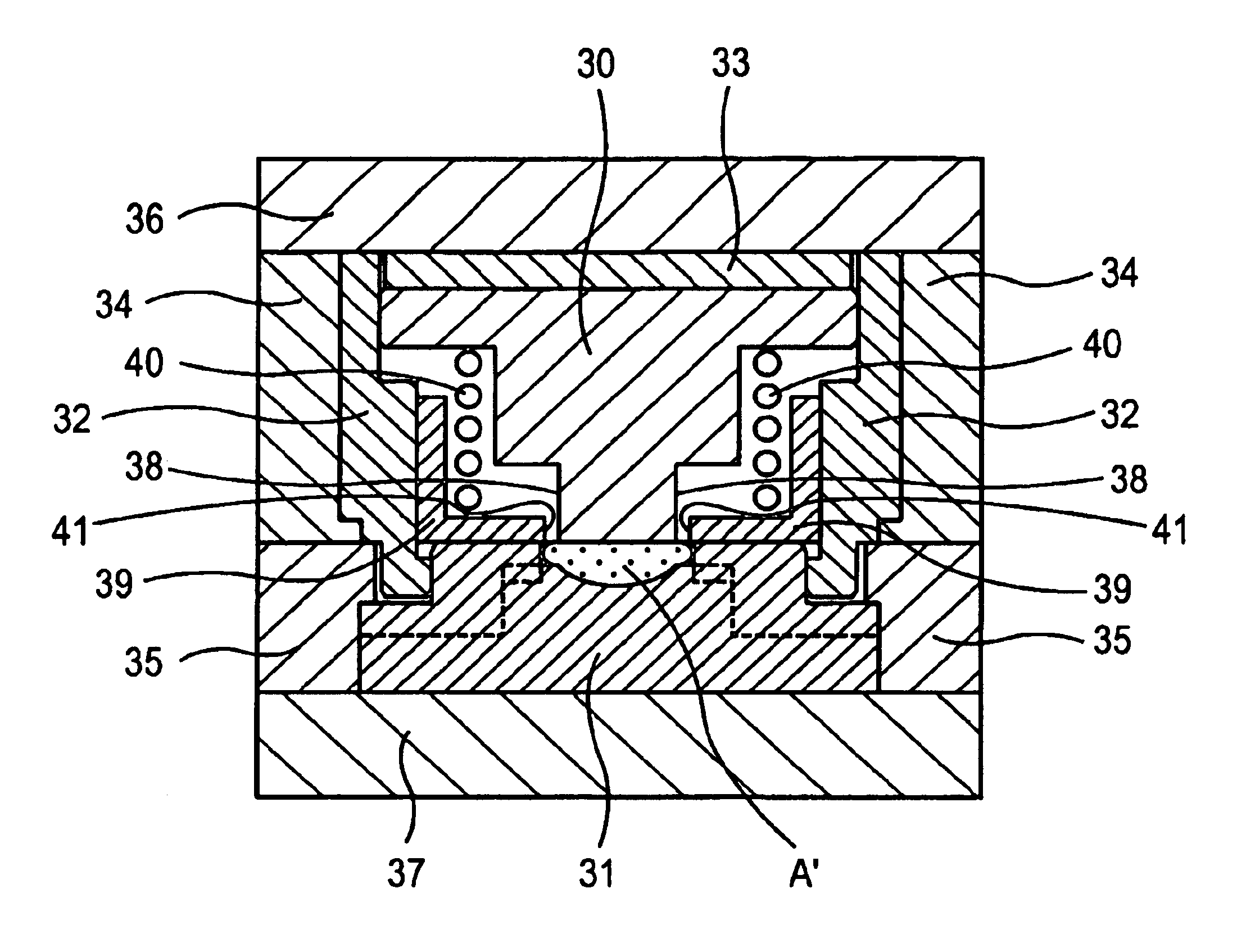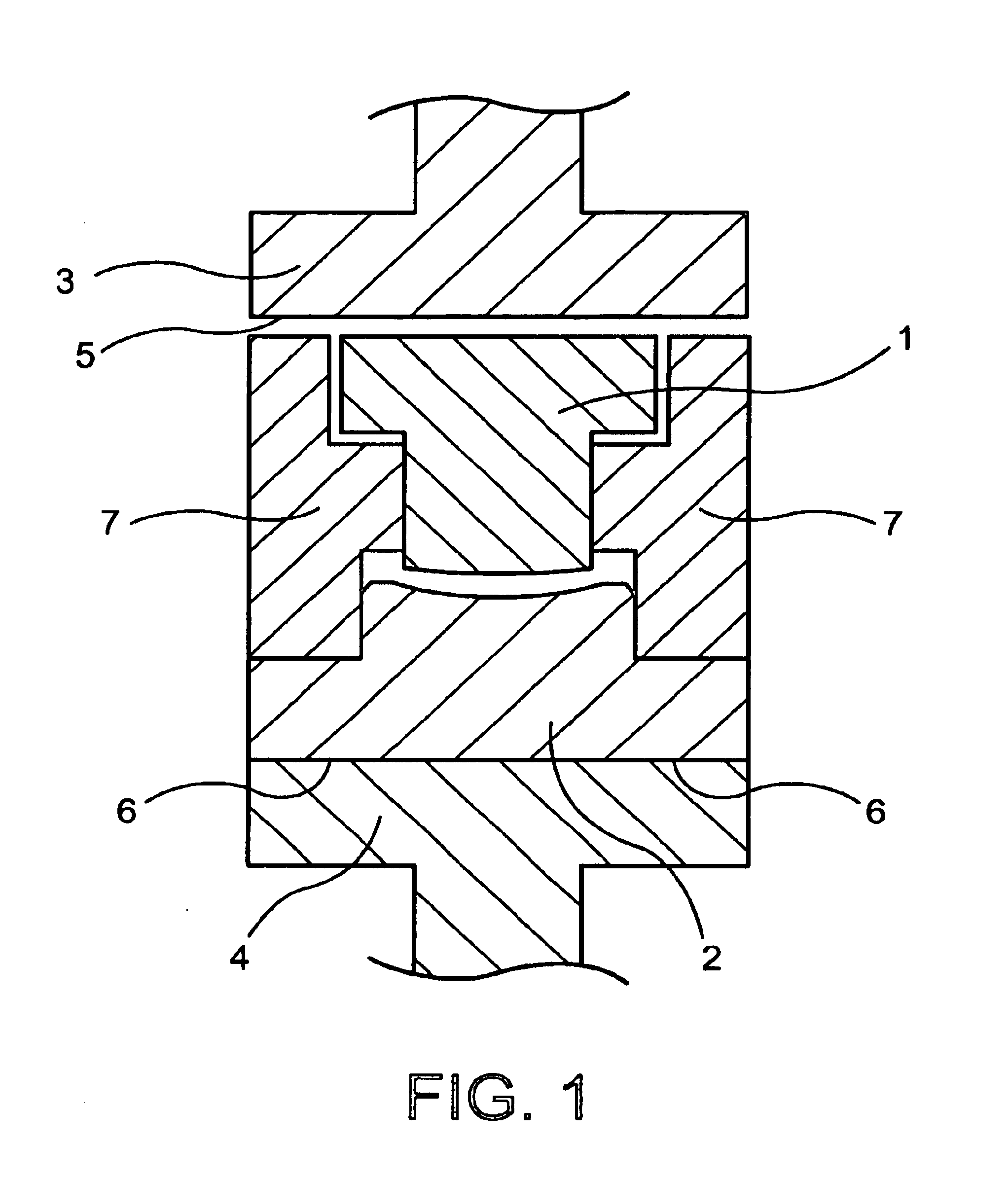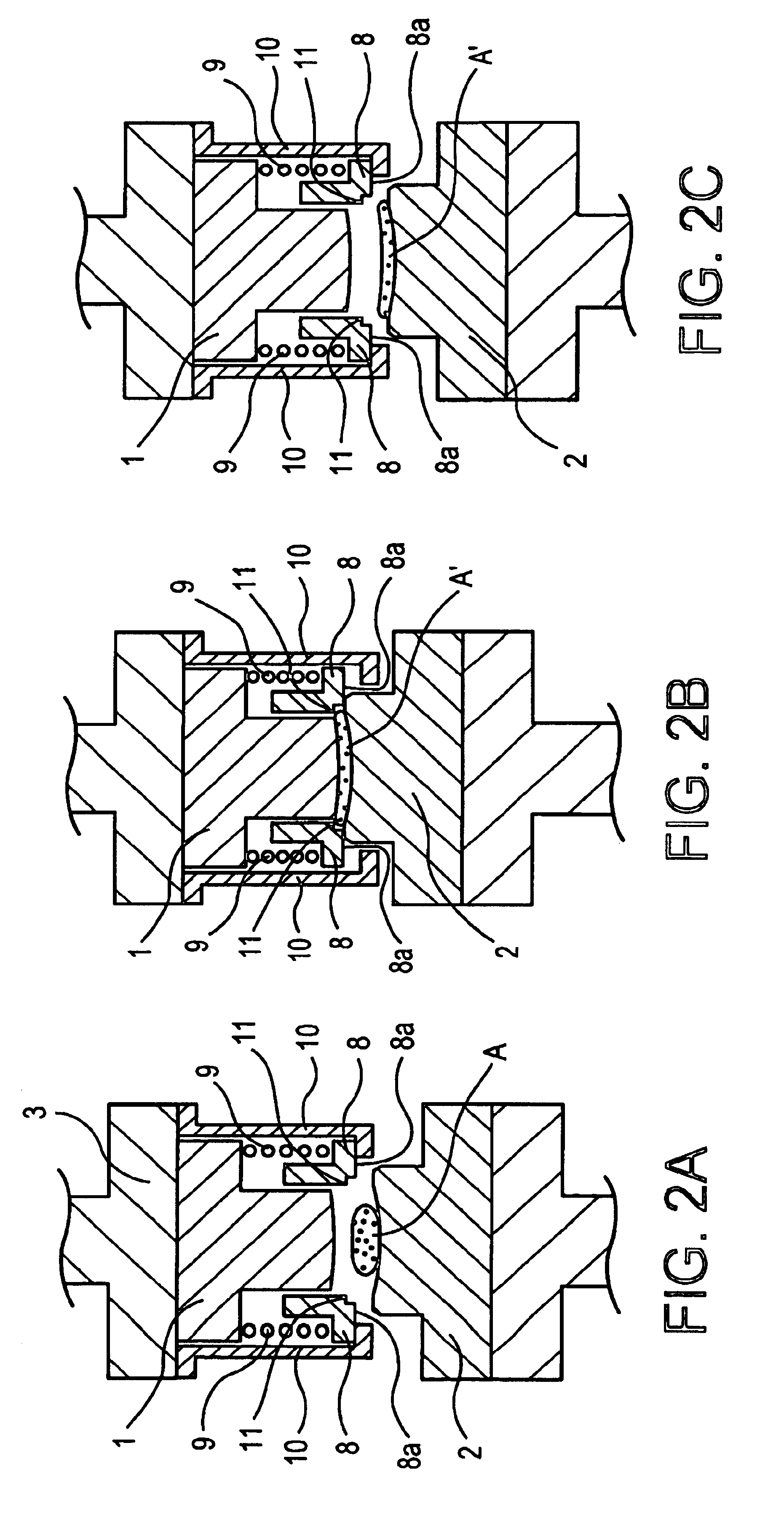Method and apparatus for preparation of molded glass
a technology of molded glass and molded glass, which is applied in the field of forming molds, can solve the problems of frame aberration, inability to manufacture with high production efficiency molded glass products having high surface precision, and tendency to shrinkag
- Summary
- Abstract
- Description
- Claims
- Application Information
AI Technical Summary
Problems solved by technology
Method used
Image
Examples
embodiment 1
FIG. 1 shows the method of assembling the molded glass article manufacturing device of the present invention. FIG. 1(a) [sic] shows the forming mold set on the pressing shaft (not shown). Upper mold 1 and lower mold 2 are comprised of a binderless ultrahard alloy and the forming surfaces thereof are coated with a protective film in the form of a thin film of Pt--Rh--Au--Ir alloy.
Upper main shaft 3 and lower main shaft 4 are precisely aligned. Upper main shaft 3 and lower main shaft 4 can be mold support members connecting the forming molds (upper mold 1 and lower mold 2) to the main shafts. That is, in FIG. 1, upper mold 1 is directly secured to upper main shaft 3 and lower mold 2 is directly secured to lower main shaft 4. However, mold support members can be present between upper mold 1 and main upper shaft 3, and lower mold 2 and main lower mold 4, and the forming molds and main shafts indirectly secured.
The lower surface 5 of main upper shaft 3 and the upper surface 6 of main low...
embodiment 2
FIG. 3 shows the molding device employed in Embodiment 2. The difference between the molding device employed in Embodiment 1 and the molding device shown in FIG. 3 is the position of spring 9. In the molding device shown in FIG. 2, spring 9 is positioned between mold separating ring 8 and upper mold 1, while in the device shown in FIG. 3, spring 9 is positioned between mold separating ring 8 and main upper shaft 3. In the present embodiment, as in Embodiment 1, the device shown in FIG. 3 was employed to mold a 20 mm press diameter convex meniscus lens. The molded glass article obtained was extremely good from the viewpoints of thickness, surface precision, axial shift, and tilt. The outer diameter [portion] was removed in a subsequent step, yielding the final product.
embodiment 3
A laser optical system microlens (object lens) was molded in the present embodiment using the molding device shown in FIG. 4. The outer diameter of the lens was determined by press molding.
The molding device shown in FIG. 4 comprises an upper mold forming unit that is approximately cylindrical and chiefly comprises an upper mold 12, an upper sleeve 14, and an upper plate 16, and a lower mold forming unit consisting of a lower mold 13, a lower sleeve 15, and a lower plate 17. Lower mold 13 and lower sleeve 15 can also be an integrated structure. Further, upper sleeve 14 is equivalent to a drum. Specifically, the upper mold forming unit comprises a disk-shaped upper plate 16; a hollow cylindrical upper sleeve 14 positioned beneath upper plate 16 and secured to upper plate 16; an upper mold 12 inserted into upper sleeve 14, positioned concentrically with upper sleeve 14, and having a forming surface on its lower end that presses down upon and forms a glass material; a mold separating r...
PUM
| Property | Measurement | Unit |
|---|---|---|
| Temperature | aaaaa | aaaaa |
| Shrinkage | aaaaa | aaaaa |
| Diameter | aaaaa | aaaaa |
Abstract
Description
Claims
Application Information
 Login to View More
Login to View More - R&D
- Intellectual Property
- Life Sciences
- Materials
- Tech Scout
- Unparalleled Data Quality
- Higher Quality Content
- 60% Fewer Hallucinations
Browse by: Latest US Patents, China's latest patents, Technical Efficacy Thesaurus, Application Domain, Technology Topic, Popular Technical Reports.
© 2025 PatSnap. All rights reserved.Legal|Privacy policy|Modern Slavery Act Transparency Statement|Sitemap|About US| Contact US: help@patsnap.com



